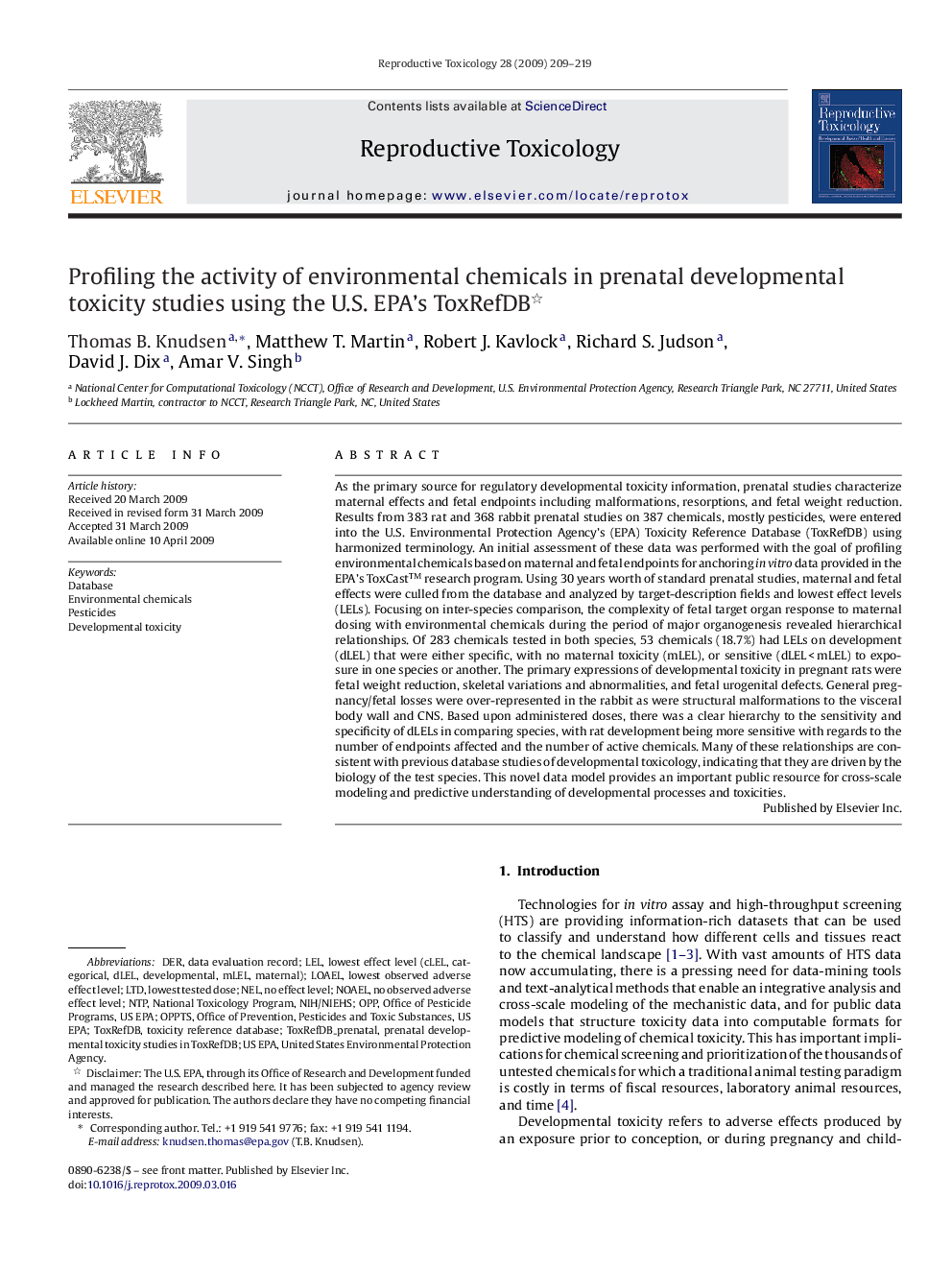| کد مقاله | کد نشریه | سال انتشار | مقاله انگلیسی | نسخه تمام متن |
|---|---|---|---|---|
| 2594951 | 1132285 | 2009 | 11 صفحه PDF | دانلود رایگان |

As the primary source for regulatory developmental toxicity information, prenatal studies characterize maternal effects and fetal endpoints including malformations, resorptions, and fetal weight reduction. Results from 383 rat and 368 rabbit prenatal studies on 387 chemicals, mostly pesticides, were entered into the U.S. Environmental Protection Agency's (EPA) Toxicity Reference Database (ToxRefDB) using harmonized terminology. An initial assessment of these data was performed with the goal of profiling environmental chemicals based on maternal and fetal endpoints for anchoring in vitro data provided in the EPA's ToxCast™ research program. Using 30 years worth of standard prenatal studies, maternal and fetal effects were culled from the database and analyzed by target-description fields and lowest effect levels (LELs). Focusing on inter-species comparison, the complexity of fetal target organ response to maternal dosing with environmental chemicals during the period of major organogenesis revealed hierarchical relationships. Of 283 chemicals tested in both species, 53 chemicals (18.7%) had LELs on development (dLEL) that were either specific, with no maternal toxicity (mLEL), or sensitive (dLEL < mLEL) to exposure in one species or another. The primary expressions of developmental toxicity in pregnant rats were fetal weight reduction, skeletal variations and abnormalities, and fetal urogenital defects. General pregnancy/fetal losses were over-represented in the rabbit as were structural malformations to the visceral body wall and CNS. Based upon administered doses, there was a clear hierarchy to the sensitivity and specificity of dLELs in comparing species, with rat development being more sensitive with regards to the number of endpoints affected and the number of active chemicals. Many of these relationships are consistent with previous database studies of developmental toxicology, indicating that they are driven by the biology of the test species. This novel data model provides an important public resource for cross-scale modeling and predictive understanding of developmental processes and toxicities.
Journal: Reproductive Toxicology - Volume 28, Issue 2, September 2009, Pages 209–219